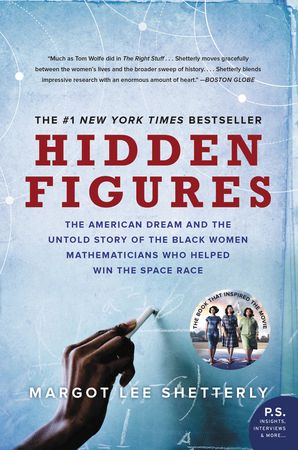

Then there was Mary Jackson, a “shrewd and intuitive judge of character, an emotionally intelligent woman who paid close attention to her surroundings and the people around her.” It was this shrewdness that cleared the way for Jackson’s ascent from human computer to aerospace engineer. As Shetterly writes, “Education topped her list of ideals it was the surest hedge against a world that would require more of her children than white children, and attempt to give them less in return.” When the married mother of four wasn’t securing promotions for her fellow black and white female co-workers, she was orchestrating ingenious childcare arrangements for her progeny and fiscally pushing her family into the middle class. There was Dorothy Vaughan, who blazed more than a few paths as one of the first black women to work as a “human computer” at the Langley Memorial Aeronautical Laboratory. More precisely, it is a historical homage to the fearlessness of mathematical minds too brilliant to be hindered by racism and sexism - to women who walked away from traditional, low-paying teaching jobs and marched into a predominantly white, segregated work force that considered them, in Shetterly’s words, “invisible and invaluable at the same time.”


The real Katherine Johnson, still alive and vibrant at age 98 and a recent recipient of the Presidential Medal of Freedom, couldn’t have done it any better.MARGOT LEE SHETTERLY’S Hidden Figures is the story and celebration of the four dozen unsung black women who worked as computers, mathematicians, scientists, and engineers from 1943 to 1980 for the National Advisory Committee for Aeronautics (NACA) and its successor, the National Aeronautics and Space Administration (NASA). She has a showstopping speech (hint: it involves those bathrooms) and the actress’ ability to put enormously complex equations on a huge chalkboard is impressive because the numbers and symbols had to be faultlessly memorized. Understandably excited to be playing significant women, the trio of lead actresses are uniformly excellent, but the film’s script is structured to make Henson the first among equals, and she takes advantage of her opportunities. Jim Johnson (Mahershala Ali, a star, like Monáe, of “Moonlight”), a good man who discovers that she is more impressive than he realized. Johnson, for her part, a widow raising three daughters, catches the eye of Col. Mary, for instance, is married to the civil rights firebrand Levi (Aldis Hodge), who initially does not see her struggles as significant. “Hidden Figures” also provides glimpses of the personal lives of its characters. Out of desperation as much as anything else, Johnson is given a shot at a place on his staff, and though we know that she is as much of a wizard as Albus Dumbledore, “Hidden Figures” milks the situation for all its worth. NASA is in a dog-eat-dog race with the Soviets to put people into space, and the man in charge of the Space Task Group, crusty Al Harrison (a composite figure deftly played by Kevin Costner), is a tough nut known to eat computers for lunch. The most interesting trajectory, so to speak, turns out to be Johnson’s. Jackson wants to become an engineer, and despite how bleak her chances are (no African American woman has achieved that title to date) she is determined to make the attempt. Super-capable Vaughan, for instance, wants to be made a supervisor, but NASA is dragging its feet and her white boss Vivian Mitchell (Kirsten Dunst) is not going out of her way to help. Though they all work at Langley, each of the three has a different job challenge and a different way they have to contend with the inescapable racism of the time and place. These women could not eat in the same restaurants, drink from the same water fountains or even, as brazenly becomes a major plot point, use the same restrooms as their white colleagues. As Jeff Nichols’ film “Loving” made clear this year, Virginia in 1961 was as segregated as any state in the Deep South. These three are part of what is known at Langley as the West Computing section, a group of some 20 mathematicians who were all African American women.


 0 kommentar(er)
0 kommentar(er)
